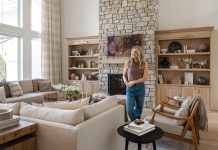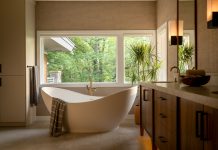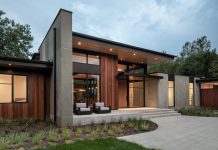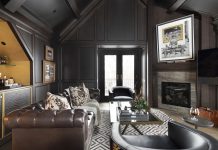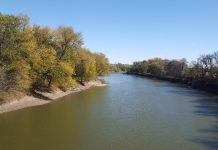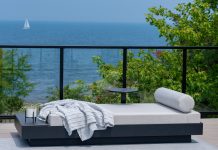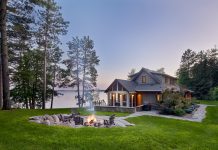Elemental Engineer
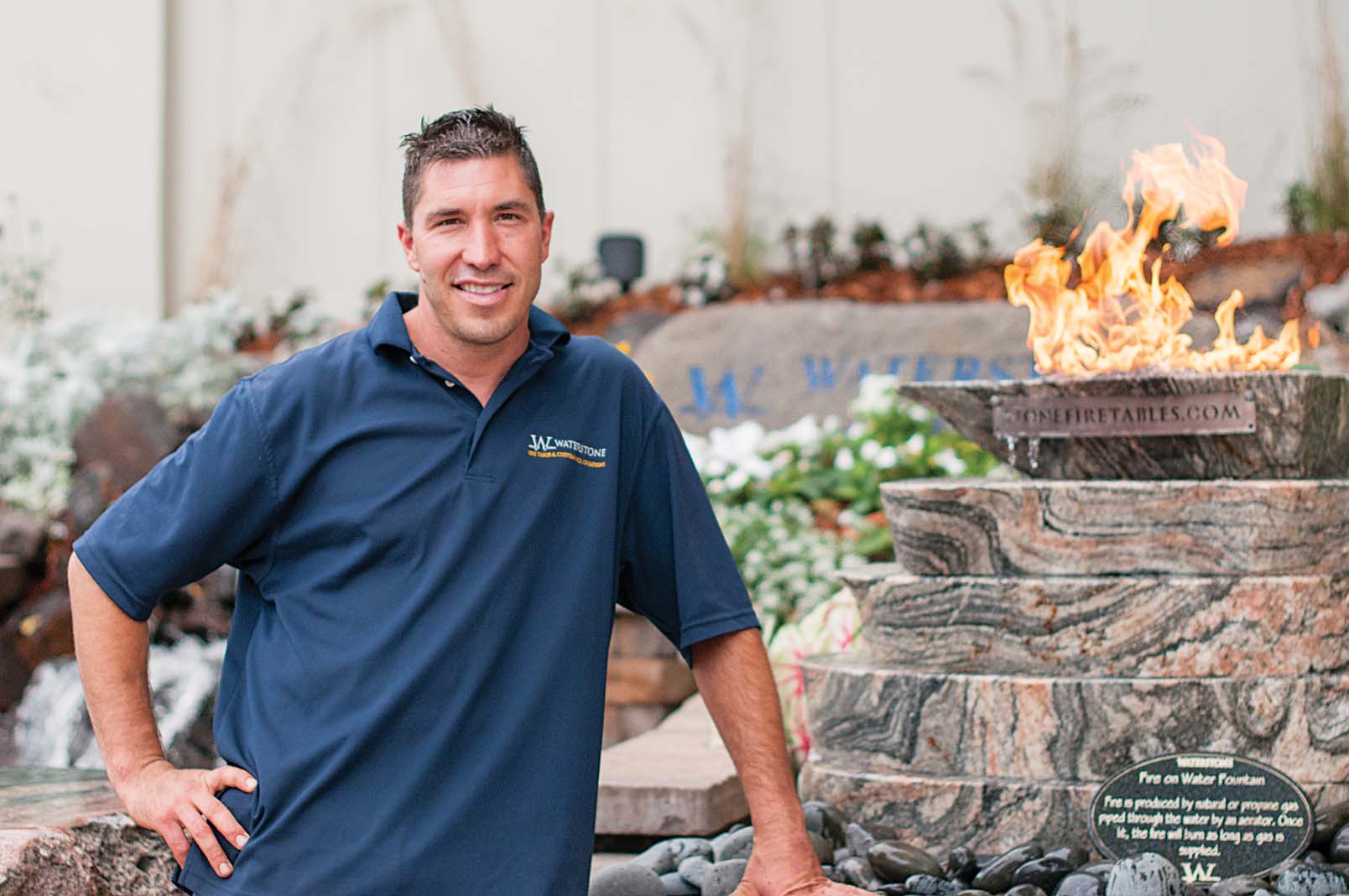 As a former competitive skier and semi-pro fisherman, Travis Gienger’s passion for the outdoors is evident in his career. After spending nearly 20 years in the landscape design-build industry, Gienger began his own business of creating unique stone and fire features (though he continues to teach landscape and horticulture classes at Anoka Technical College in his spare time). While 90 percent of his projects are his wildly popular stone fire tables, he also constructs fire rocks, fire and water fountains, and custom stone art, and he ships his creations to clients all over the country. Examples of his most recent works can be found at his showroom in Anoka, and he accepts custom requests as well.
As a former competitive skier and semi-pro fisherman, Travis Gienger’s passion for the outdoors is evident in his career. After spending nearly 20 years in the landscape design-build industry, Gienger began his own business of creating unique stone and fire features (though he continues to teach landscape and horticulture classes at Anoka Technical College in his spare time). While 90 percent of his projects are his wildly popular stone fire tables, he also constructs fire rocks, fire and water fountains, and custom stone art, and he ships his creations to clients all over the country. Examples of his most recent works can be found at his showroom in Anoka, and he accepts custom requests as well.
How did you get started with these specialized projects?
I was at Barnes & Noble about six years ago and I saw a book about how a guy made a birdbath out of a rock, and I thought to myself, “I bet I could do something like that with a sink.” So I got a rock—probably the hardest one I’ve ever touched in my entire life—and just started cutting it apart. I didn’t have the foggiest idea of what I was doing; I didn’t know how to grind down the lines, I was using all the wrong tools, and I had to research how to polish it. Needless to say, it took way longer than it should have, but I liked it. Then I had the idea to make a bathtub out of a boulder, and everything snowballed from there.
What attracted you to this line of work?
I’ve always liked rocks and finding different ones, but it was slicing into them that did it for me. The very first fire rock I sliced was one I had passed over in the pile about seven times, but then we cut it open, and the inside was stunningly beautiful, just incredible. I love how every rock is so different when you slice into it—you never know what you’re going to get. So in any given day, you’re producing something no one else has or will ever have.
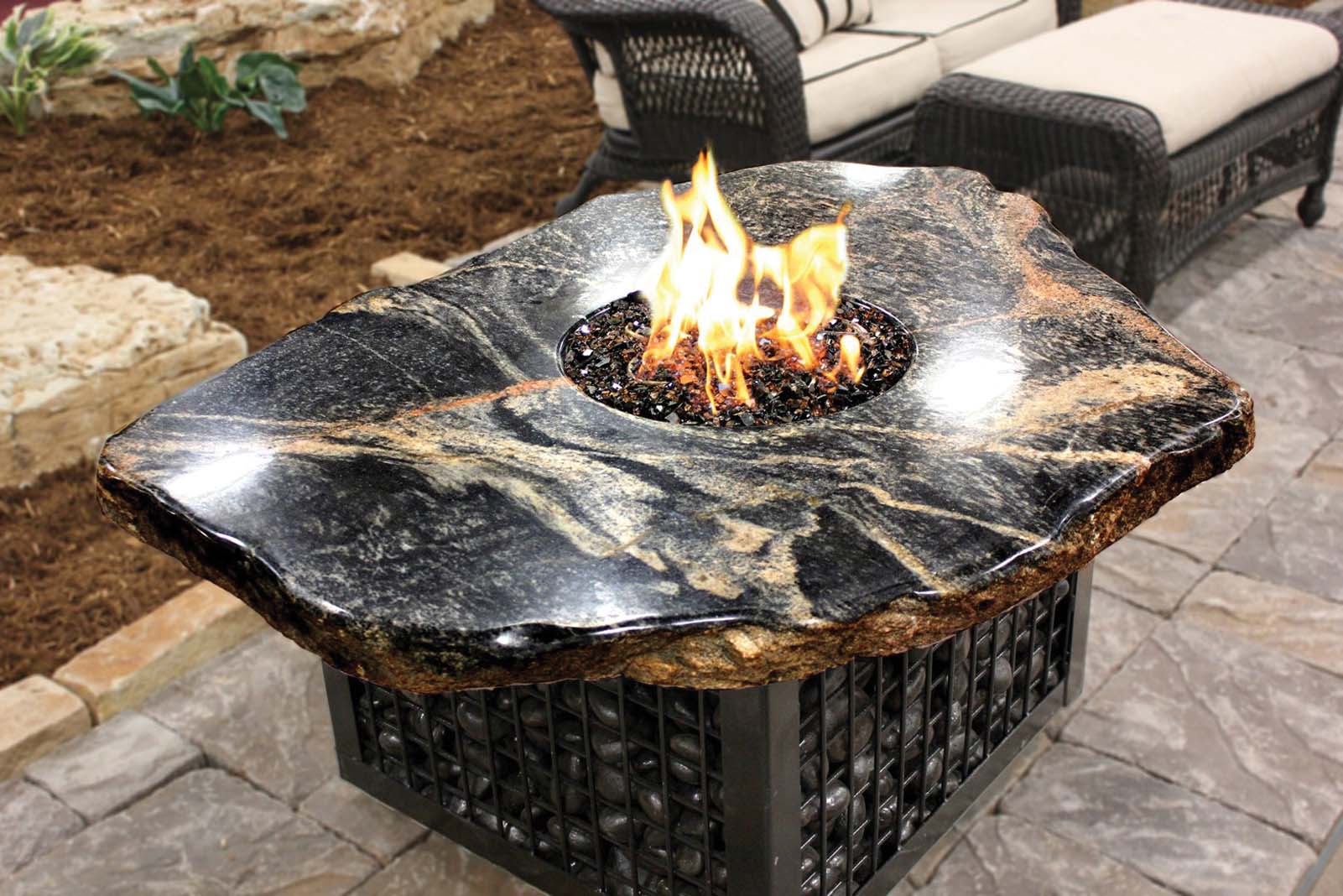
What is the creation process like for your fire tables?
You find a rock and you use a diamond wire—like a cable with diamond beads throughout—to cut it. From there, you use a polisher to smooth it out, just like you’d sand wood down. Then we cut in a line burner or drill in a round burner, and then the scraps can be made into other things like bar stools or wine racks. So we really use all the leftovers. In fact, I’m planning on building a raised deck out of some scraps this summer—the outside wall will be made of four layers of sliced rocks, and a bunch of pieces from the tops of fire tables will make the patio surface.
What sets your products apart?
We’ve worked with rocks and boulders from Canada, New York, Montana, and Idaho, but 90 percent of what we use are local Minnesota boulders. What’s cool about our boulders is the glaciers and everything melted here, so some of what we have are the oldest in the world. You can find the same lines in the gneiss around the country, but they’re typically black or brown or tan, and we have a rainbow of colors, including blues and grays and whites and pinks. I’ve even found a black one with red lines going through it, and I just sold it to a downtown high-rise in Chicago.
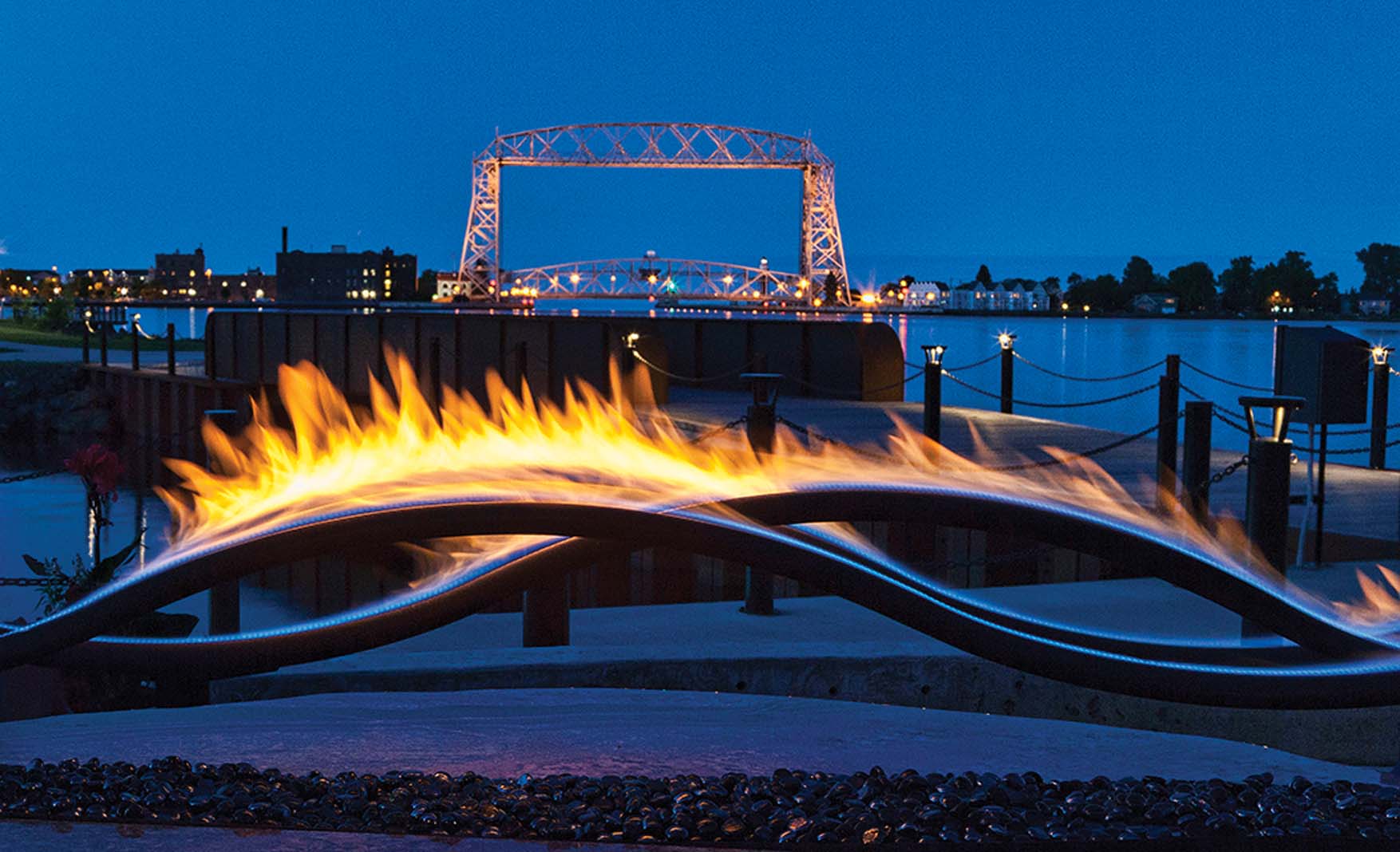
What are you currently working on?
I’m working on some prototypes for these fire-and-water columns I’m hopefully going to be able to showcase at the state fair. They’ll have a torch-like flame at the top and water flowing out from inside the rock, and they’ll be lit up. But I have about 13 projects going out the door in the next few weeks, so I haven’t had much playtime lately!



